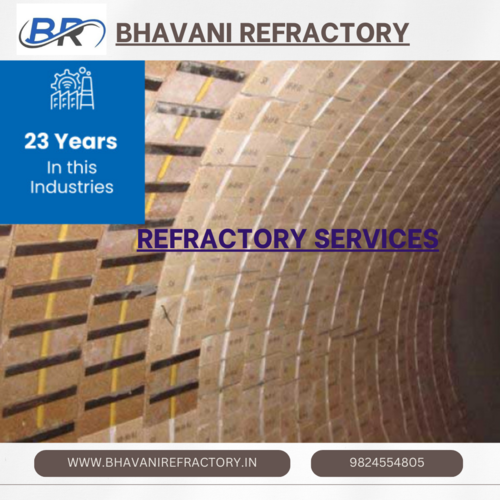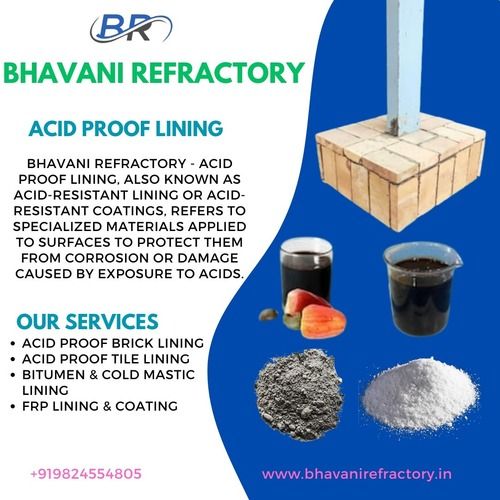Call Us
08045800126
Refractory Lining Work
Product Details:
- Application Chemical Industry, Pharmaceutical Industry
- Product Type Refractories
- Types of Refractories Basic Refractory
- Shape Powder
- Dimensional Stability Reversible
- Click to view more
Refractory Lining Work Price And Quantity
- 600 INR/Square Meter
- 1000 Square Meter
Refractory Lining Work Product Specifications
- Reversible
- Powder
- Basic Refractory
- Refractories
- Chemical Industry, Pharmaceutical Industry
Refractory Lining Work Trade Information
- Days
- All India
Product Description
BHAVANI REFRACTORY - Refractory lining work involves the installation of specialized materials to protect industrial structures such as furnaces, kilns, reactors, and other high-temperature equipment from the intense heat and chemical reactions occurring within them. Refractory linings are designed to withstand extreme temperatures, thermal shock, and chemical corrosion, while also providing insulation to conserve energy and maintain process efficiency. Here's an overview of refractory lining work:
Material Selection: Refractory materials are chosen based on factors such as the operating temperature, chemical composition of the process materials, mechanical stress, and thermal cycling. Common refractory materials include fireclay, high-alumina, silica, magnesia, zirconia, and carbon-based materials.
Surface Preparation: Before installing the refractory lining, the surface of the equipment must be prepared. This typically involves cleaning the surface to remove any contaminants, repairing damaged areas, and ensuring proper alignment.
Installation Techniques: Refractory linings can be installed using various techniques, including casting, gunning, ramming, and bricklaying, depending on the application and specific requirements. Skilled technicians or refractory contractors perform the installation to ensure proper bonding and alignment of the refractory materials.
Anchoring Systems: In many applications, refractory linings are anchored to the underlying structure using specialized anchoring systems. These systems help to secure the refractory materials in place and prevent displacement or failure during operation.
Expansion Joints: Expansion joints are incorporated into the refractory lining design to accommodate thermal expansion and contraction of the equipment during heating and cooling cycles. Properly designed expansion joints help to prevent cracking and spalling of the refractory lining.
Quality Control: Quality control measures are implemented throughout the installation process to ensure that the refractory lining meets the required standards for performance and durability. This may include inspections, testing, and documentation of the work performed.
Curing and Drying: After installation, the refractory lining is allowed to cure and dry according to manufacturer specifications. This typically involves controlled heating to gradually increase the temperature and remove moisture from the refractory materials.
Maintenance and Repair: Regular maintenance and inspection are essential to ensure the continued performance of the refractory lining. This may include periodic inspections, repairs to damaged areas, and replacement of worn-out refractory materials.
Overall, refractory lining work is a critical aspect of maintaining the integrity and efficiency of industrial equipment operating at high temperatures. Proper installation, material selection, and maintenance are essential for ensuring the longevity and performance of refractory linings in various industrial applications.
SPECIFICATION
|
Location |
All Over India |
|
Service Charges |
Yes |
|
Method Of Manufacture |
Dry Press Process |
|
Types Of Refractories |
Shaped Refractories |
|
Industries Served |
Cement & Lime |
|
Types Of Monolithic Refractories |
Coating refractories |

Price:
- 50
- 100
- 200
- 250
- 500
- 1000+

 English
English Spanish
Spanish French
French German
German Italian
Italian Chinese (Simplified)
Chinese (Simplified) Japanese
Japanese Korean
Korean Arabic
Arabic Portuguese
Portuguese


 Call Me Free
Call Me Free
